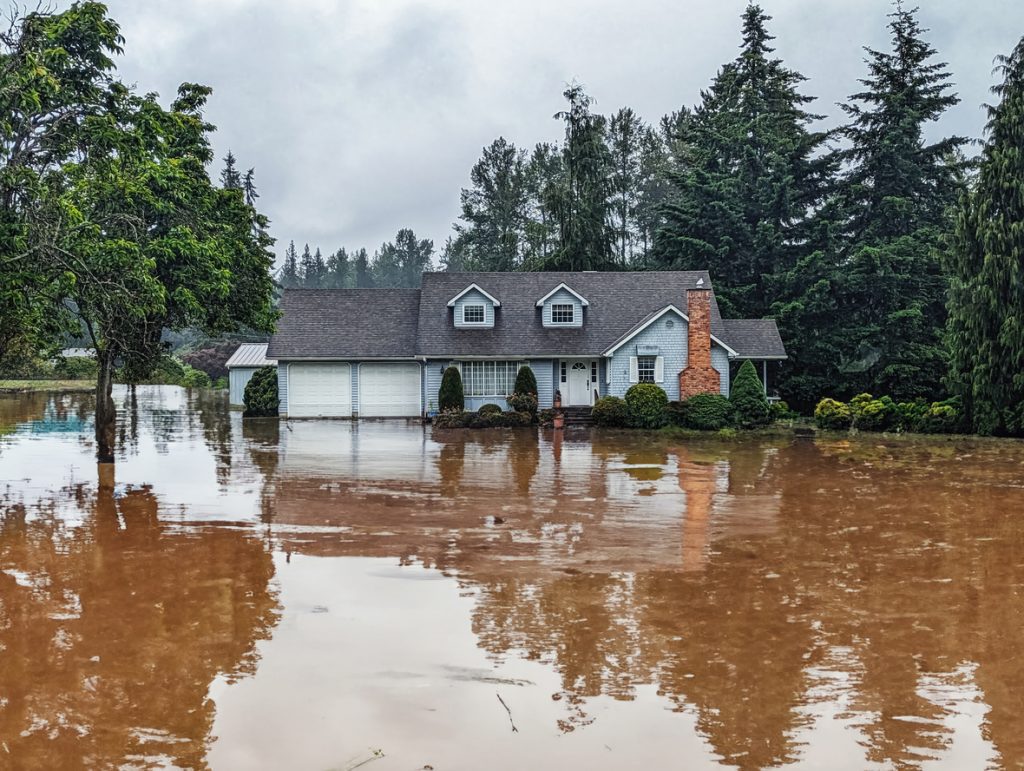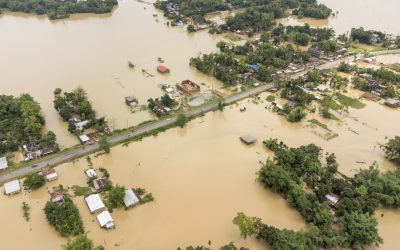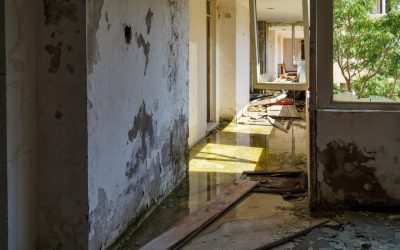Who Is Responsible for Flood Damage: Landlord or Tenant?
With the floods coming and the waters rising with sudden flooding, the very first and most pressing question on the minds of tenants and homeowners is: Who is responsible for flood damage: landlord or tenant?
This seemingly innocent question is really a legal and financial maze, mixed with complexities of Lease Agreements, insurance policies, and municipal ordinance obligations. It is important for both parties to understand and be aware of their obligations upfront to protect their undertakings while dealing with the fallout.
Ever wondered, what is considered flood damage?
Flood damage can come in many forms, from water-damaged carpets and ruined furniture to damages to the structure and mold infestations. The cost and associated hassle of removing and repairing that damage can be significant, so it is important to clearly define who is responsible for paying for repairs.
While general presumptions can lend themselves to favour one liability or another, the definitive answer relies heavily on the particulars of your lease agreement, the cause of the flooding and insurance coverage.
Who Is Responsible for Flood Damage: Landlord or Tenant? A Determining Factor
The cause of the flood loss determines liability with respect to flood damages. Not all water damages are “flood damages” for insurance purposes, and it must be qualified.
External Flooding (Natural Disaster)
Flooding due to water overflowing from rivers, lakes, oceans, and excessive rainfall results in general flooding. This is the quintessential example of flood damage. In this case, the structural loss will typically fall to the landlord, which will file against their property insurance (flood insurance – which is separate and distinct from homeowner’s insurance). The tenant’s insurance will cover personal property.
If you’re wondering, can installing a seawall help mitigate flood damage, you’re correct! IA seawall helps mitigate flood damage by creating a physical barrier against rising water levels, protecting inland areas from coastal flooding and erosion.
Internal Flooding (Plumbing System Failure, Appliance Failure)
Burst pipes, clogged toilets, leaking appliances (like dishwashers and washing machines), and sprinkler systems.
- Landlord Responsibility: If the internal flooding was caused by a plumbing failure, structural defect, or was either a tenant-owned and landlord-maintained appliance, then it is likely the repair obligation rests with the landlord. After all, it is their legal duty to provide a reasonable habitability standard.
- Tenant Liability: If internal flooding is caused by tenant negligence-such as flushing things that are not flushable, keeping the tap open without purpose, or wrong appliance usage-train would be held liable for the damage.
- Roof Leaks: A water leak through the roof could mean heavy water damage inside. If the repaired loss happens due to the landlord’s lusts maintenance responsibility or any other such person not due to wear and tear and neglect to fix on time, then the landlord may be held liable for the damage.
- Sewer Backlog: Well and contamination may be the resulting backlog. Generally based on the origin of the backlog, the owner could be responsible. If it occurs because of overflow in the city sewer system, it may be considered an “act of God” or an act on an infrastructure level.
If a clog gets lodged in the building pipes that are a landlord’s responsibility to maintain, then the landlord is generally deemed at fault. Where the blocking act is on the tenant’s part, the responsibility may be shifted Role of Insurance: Landlord’s Property Insurance vs. Renter’s Insurance
Insurance is the most usual method to distribute the cost of flood damage. One must understand what kinds of insurance come into play:
- Landlord’s Property Insurance (Dwelling Policy): A landlord’s general property insurance policy for the most part insures damage to the structure of the building itself, including walls, floors, ceilings, and even built-in fixtures. Significantly, however, standard property insurance policies almost everywhere exclude damage due to flooding.
To be insured for exterior flooding, a landlord must purchase a separate flood insurance policy, typically offered through the National Flood Insurance Program (NFIP) or private sources.
Should the landlord not have flood insurance and the damage be caused by outside flooding, he must pay for the damage himself unless he can prove tenant negligence. This policy also covers against loss due to perils, including broken pipes or other inside water damage, provided it’s not due to tenant negligence.
- Renter’s Insurance (Tenant’s Personal Property Insurance): Renter’s insurance is designed to insure a tenant’s personal property (furniture, appliances, clothes, etc.) from a wide range of perils, including water damage. Most renters’ insurance policies will insure loss of personal property through internal causes like a burst pipe or an overflowing toilet, provided the resulting cause was not due to tenant negligence.
However, similar to landlord policies, standard renters’ insurance typically does not cover loss from outside flooding. Renters who occupy a flood area or would like to have coverage of their belongings in case of natural floods must purchase a separate flood insurance policy for contents. Otherwise, their belongings destroyed by outside floodwaters will remain uncovered.
It’s a common misconception that the landlord’s insurance will cover the tenant’s personal property. It doesn’t.
The structure is insured under the landlord’s policy, and the tenant’s property is insured under the renter’s policy. Both must be aware of these distinctions and purchase the appropriate coverage.
Seeking Professional Assistance
Can flooding cause foundation damage?
Yes, flooding can absolutely cause significant foundation damage due to hydrostatic pressure, soil erosion, and saturation of building materials.
Therefore, you must hire a professional quickly in such cases.

Here’s where hiring a professional helps.
- Public Adjusters: A public adjuster can be a huge help to landlords and tenants who have suffered a large flood loss. Because they act as advocates for the policyholder, public adjusters differ from adjusters who work for the insurance company.
To make sure you get a just settlement, they evaluate the loss independently, submit loss reports, and bargain with the insurance provider on your behalf. In complex cases where liability is unclear or the claim is underpaid, this can be useful.
- Legal Counsel: In the event that an insurance policy’s claims are unjustly rejected, the lease is unclear, or negligence is contested, one must consult with the advice of an attorney who is an expert in landlord-tenant law or property insurance disputes.
Deciding who is at fault for flood damage: landlord or tenant requires careful scrutiny of lease documents, the cause of flooding, and insurance policy details. It is best to defend yourself against the financial and emotional stress of flood damage by taking proactive measures, such as procuring adequate insurance coverage and open communication. Should flood damage in Florida be on the horizon, the right expert counsel can prove to be a game-changer.
Contact Care Public Adjusters today to have your Florida Flood Damage Claim started and receive the reimbursement you deserve.
Key Resources
Key resources:
-
Florida Department of Agriculture and Consumer Services (FDACS):
Provides an overview of landlord and tenant obligations under Florida law. -
The Florida Bar:
Details the rights and duties of landlords and tenants, including maintenance responsibilities and legal remedies. -
Florida Realtors Association:
Discusses landlord duties and tenant rights in the event of storm damage, including scenarios involving flooding. -
Bay Area Legal Services:
Offers a comprehensive guide for tenants, covering various aspects of landlord-tenant relationships in Florida.



